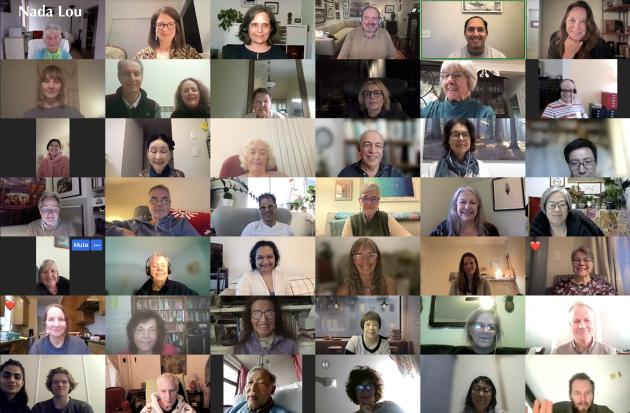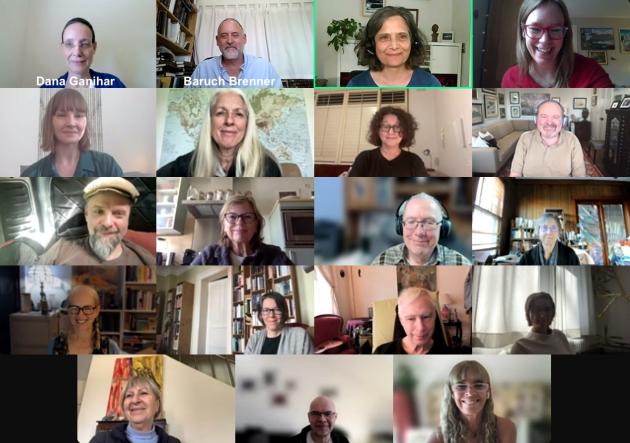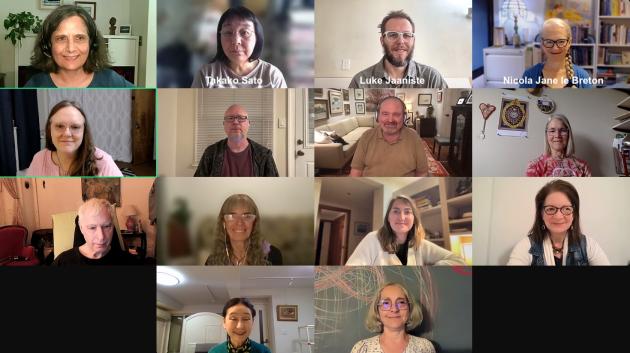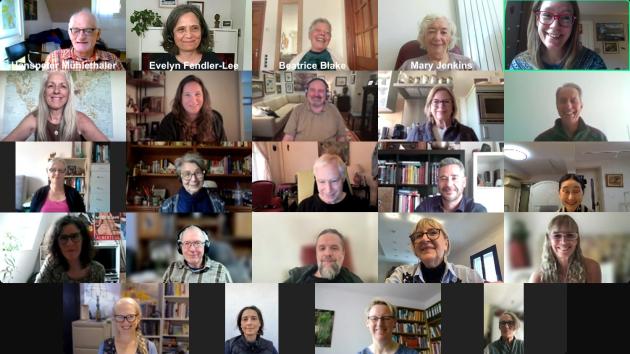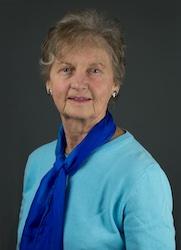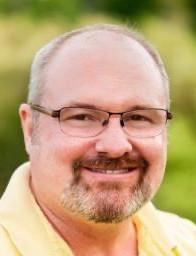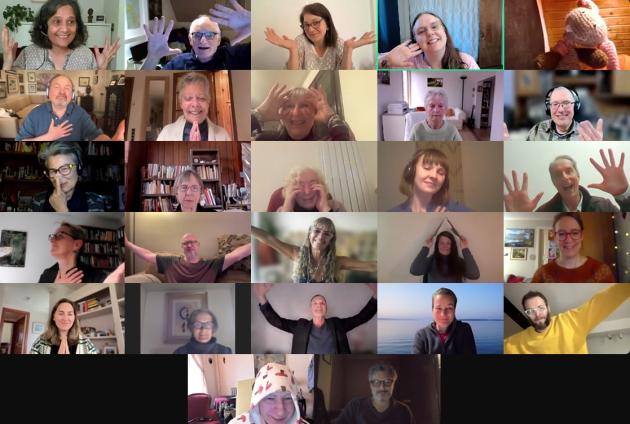Kommentare von Hanspeter Muehlethaler (in German) (PDF)
徳丸聡子のコメント (in Japanese) (PDF)
What a wonder, participating in the recent TAE Symposium 2025 (April 4-6, 2025), and discovering our worldwide TIFI network of TAE practitioners as a diverse, supportive, life-forwarding community! One hundred and eighteen participants attended from 23 countries. As one participant exclaimed afterwards, “Just a great big thank you. What a lovely community,” and another, “I love this work. It was wonderful spending time with this community.” I feel such gratitude to the conference organizers, Evelyn Fendler Lee, Satoko Tokumaru, Hanspeter Muehlethaler and Catherine Torpey; the TAE teachers for their workshops; the TAE practitioners for their presentations; and for how everyone participated.
The Symposium really delivered on its theme, “Exploring Experiences and Applications of TAE.” One practitioner said, “I was impressed to hear how TAE is spreading out in the world and how many engaged practitioners (experienced and newer ones) contributed with high engagement to the event. I feel that TAE is a more and more perceived practice for creative thinking.”
There is a wide range of ways that practitioners are using TAE to deepen their life engagement. From self-care, growth, spirituality, to Satoko Tokumaru’s use of forms for creative writing. From Monika Lindner creating a German-as-a-second-language program for vulnerable immigrants, to Sigridur Thorgeirsdottir and Donata Schoeller's development of a global, multi-university training program in embodied critical thinking! I am in awe at these hard-won developments and understand they did not come easily.
As Dana Ganihar and Baruch Brenner pointed out in the handout from their first workshop in the symposium:
The place where my life is most unique in its essence is often also the place where I was pushed away and misunderstood. Often, I don’t even think of it as a precious knowing. And so, either I haven’t touched it at all, or when I do, I feel pain. Sometimes, when I recognize myself from that place, I feel I am strange. For sure, we don't know this place touches on a primordial soul gift.
I deeply value how TAE trainers and practitioners are finding safe, accessible, life-forwarding ways to enable people to come alive again to their presencing in the world and empowering wisdom.
There was also a sense of our community evolving together. As one participant noted, "[I was moved by] the sense of community. I felt we moved a few steps forward. A higher level of presentations and conversations.”
I would like to reflect on where our community is, where we are developing, and a promising, still largely untapped area by drawing on three key aspects which Luke Jaaniste highlighted in his TAE practitioner presentation. The presentation was about what makes Gendlin’s TAE unique and what it can contribute to people already engaged in creative work.
The conducive attitude
Luke referred to the first aspect as “the conducive attitude,” celebrating how this was powerfully present in our TAE Symposium and in our Focusing community:
It’s something that I am constantly refreshed by — as I was last night with Dana’s questions (the first presentation in the conference) and the breakout session I had with Beatrice and many other sessions I have had with people from the Focusing world. The expectation that someone has something to share and a listening spirit leads to a kind of — for me at least — unfolding density of things I now can say, that fifteen minutes into some session, I wouldn’t have realized I was going to say. The conducive attitude of that sort of listening to felt sensing is so powerful.
This “conducive attitude” was powerfully present in the TAE conference. I sensed it in the way people participated. I also sensed it in what presenters shared about the discoveries they've made in their own TAE processes, and in sharing TAE in the world. One person noted that they were “continually surprised by the experience of switching out of the ‘head’ and into the ‘body’ and the way this became more and more natural through the three days.”
A Better Way
Next, Luke described TAE's contribution to other forms of research as “a better way of talking about research method” that shows how “felt sensing, concepts and situational intricacy connect.” Luke felt this is going to take “a bit of work” to bring it out to the world. It seems to me that an example of this is the recent Practicing Embodied Thinking in Research and Learning edited by Donata Schoeller, Sigridur Thorgeirsdottir, and Greg Walkerden (2024). The academics who are engaged in this work are sharing aspects of it with us through the TAE Symposium and the Gendlin Symposia.
There were rich reflections on TAE theory and practice. Evelyn Fendler-Lee’s presented on her innovations of TAE and how she teaches it, and Hanspeter Muehlethaler, Beatrice Blake, and Evelyn Fendler-Lee’s gave a panel presentation on the difference between TAE and Focusing (moderated by Mary Jennings). One participant wrote, “Lovely to feel into the difference between Focusing and TAE in Hanspeter's exercise in the first session this morning. Carried forward my TAE project.” Another wrote, “I feel I have a deeper understanding of some of the nuances that set TAE apart from Focusing and also connected the two.”
How are Focusing and TAE different? How do they impact each other?
Steps 10 - 14
Luke’s third theme has to do with the second half of the steps - and particularly steps 10-14. He appreciates Gendlin’s generative logic: reasoning with and from the felt sense about the terms generated from the instances explored, and generating new, life-forwarding terms in this way. My sense is that our community is still growing into this part of the TAE process: deriving terms from living life-processes and reasoning from this in ways that deepen our appreciation, understanding and engagement with inter-relating processes, processes which constitute and support us. Luke referred to this as how:
…terms and ideas and multiple concepts… relate together… [How Gendlin] a few times… said, but maybe not in an obvious way, that we can have a felt sense of the relationships. So we don’t just have a felt sense of nouns and verbs, we have a felt sense of syntax, we have a felt sense of how this and this go together… I try these days when I’m felt sensing to really feel how stuff connects, how stuff possibly interacts… How it is that I could articulate in a potentially nuanced grammar the way things are operating together. And that’s a resource for me.
Our TAE community has lots of room for people to explore specific steps and in different combinations without feeling that they have to engage in the later steps. There is so much of value and depth in TAE without the final steps! For example, Beatrice Blake shares TAE with a broader community who might otherwise have been put off with how abstract and esoteric it can seem.
However, I also feel a sense of excitement, numinosity and promise about what Luke pointed to in steps 10-14, about the organic process logic of deeply felt interconnections between terms generated in the TAE process. This is an important part of Gendlin’s legacy, waiting for us to explore more fully and to discover how to share with each other and with the world.
Celebrating Nada Lou
The TAE Symposium also provided a perfect context for the TIFI community to thank and honor Nada Lou for her visionary work in creating so many DVDs of Eugene Gendlin, and for making her digitized video recordings available through TIFI on the new Video Store (videos.focusing.org). I unfortunately never met Gendlin in person. As wonderful as his writings are, and the teachers and community who carry on his legacy, I am grateful to Nada Lou for enabling me and so many others to experience Gendlin teaching. Through her video collection, we can get a feel for how he taught and responded to questions in such warm, richly situated, eye-opening, nuanced, life-forwarding ways. Her work strengthens our ability to form our own unique relationship with him and his teachings.
Bill Gayner is a registered social worker and psychotherapist at the Centre for Psychology and Emotional Health in Toronto, Ontario, where he offers online individual, couples and group therapy. His training is centered on emotion-focused mindfulness, on which he authored a peer-reviewed paper that appeared in Person-Centred and Experiential Psychotherapies, Vol. 18. Bill is also the Founder and President of Touching the Earth Mindfulness in Ontario, a certified Focusing trainer and is currently serving on the TIFI board as vice president.
Brief Comments by Hanspeter Muehlethaler
ʺ... they (the students) believed that the answer was out there somewhere...ʺ
This sentence from Takako Sato's report on her first approach to TAE caught my attention and I condensed it into the basic question for my own TAE processes (and Focusing): Do my words and meanings come from ʺsomewhere out there or from within me?ʺ
I experienced an intensive weekend with a variety of new impressions and inspirations. The event was superbly organized by Catherine and the TIFI team, and was well supported by the group of volunteers.
I am impressed how TAE as a playful method for creative thinking is attracting more and more interest and spreading around the world. This was especially evident in the number of dedicated contributions from practitioners.
Personally, I was particularly taken by contributions in which participants were able to actively partake through guided exercises, as well as those where personal experience and experiential quality of the speakers was expressed, as in the example above.
I would have liked to have seen more of this.
English translation by Evelyn Fendler Lee
Gathering Made The Network Visible
by Satoko Tokumaru
The TAE Symposium, a “new kind of TAE gathering,” was held recently. It can be said that the Symposium, which brought together TAE practitioners and TAE teachers from around the world, was a success. The most significant outcome was the revelation that TAE is already being used in many different regions, in many different fields, and for many different purposes.
The use of TAE in many areas, such as personal growth and awareness, its application in education, and its application in relation to the environment, was discussed in detail by the practitioners themselves. Their achievements exceeded our expectations. A wide variety of variations emerged, but they were all truly TAE in terms of matching to the felt sense and incorporating all or some of the TAE steps, directly or indirectly. The gathering visualized the formation of a network.
In fact, the “TAE Symposium” is already a familiar event for Japanese Focusers, including myself. This is because it has been held almost every year in Japan since 2012. This year, about 100 people gathered online in March. However, participation from Asia, including Japan, in TIFI's TAE Symposium, was little. This could be considered a challenge. TAE, as an application of Focusing, should make it possible to connect with each other in a pre-linguistic sense. I am pleased to have taken a step forward with this year's symposium, and I would hope to continue this progress.
English Translation by Hideki Kamimura
Additional quotes from participants
"I feel a deep sense of empowerment to carry forward my project in creative, salient life affirming ways."
"I liked the format of the panel discussion, where we each had 12 uninterrupted minutes to present our point of view."
"I was impressed to hear how TAE is spreading out in the world and how many engaged practitioners (experienced and newer ones) contributed with high engagement to the event. I feel that TAE is a more and more perceived practice for creative thinking."
"Baruch's words helped lift grief's veil a bit by reconnecting a felt sense in me with a realness of life. thank you."
"I was very excited to discover someone in the Focusing world who is helping people discover their 'uniqueness' and realize the sacred commitment, life necessity of contributing this uniqueness in the world."
"I enjoyed the symposium very much, especially the various perspectives of TAE and the sharings, application and experiencing. A beautiful insight of the whole spectrum of TAE. Thank you so much!"
"I so appreciate the tremendous effort that went in to putting this on. I don't take it lightly."

